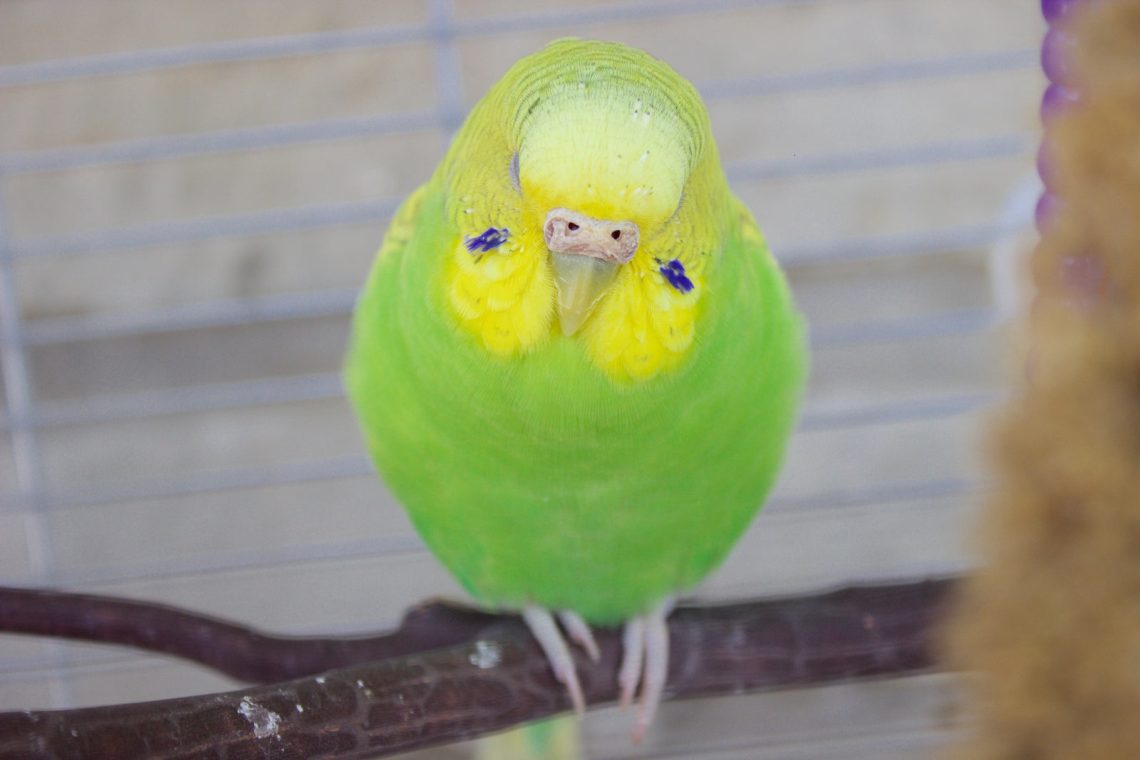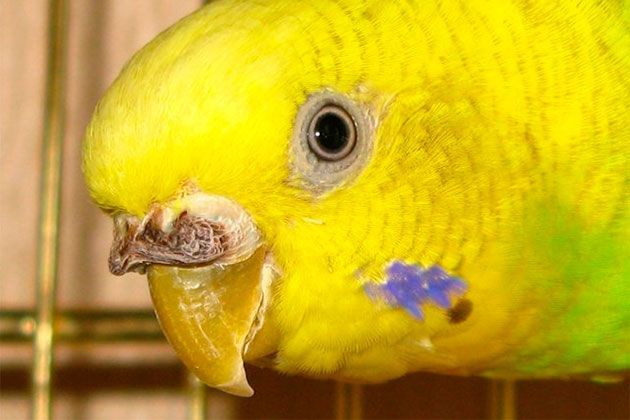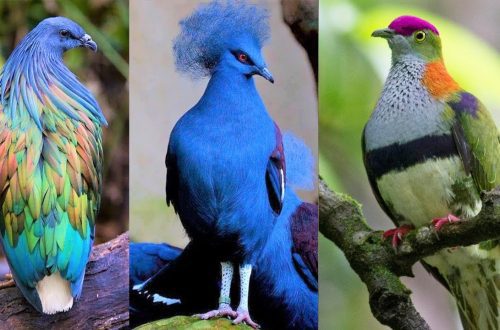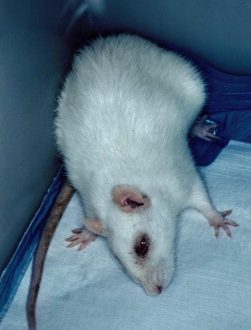
Церебрална хиперкератоза код папагаја

The cere is found on the beaks of parrots, pigeons, owls and falconiformes. Normally, the skin in this area is without feathers, smooth, uniform in structure and color. The cere of a young male is lilac or light purple in color, evenly colored, including the visible part of the nostrils. Or there may be lighter blue circles around the nostrils. By six months, the male’s cere acquires a rich purple / dark blue color. The cere of a young female is usually blue with white circles. It can also be almost completely white, dirty white or beige, by about 7-8 months it becomes covered with a brown crust, which is the norm for the female. Do not be afraid if the parrot wax has changed color when the bird is young. Until the bird is 35 days old, the shade of the wax and plumage can change and this is the norm. Up to 1.5 months, young parrots have a black mark that reaches the middle of the beak, later it disappears.
If the shade of the wax has changed in a bird, this indicates its puberty.
In male budgerigars of some colors, such as lutino and albino, the cere may not turn blue all his life. But there are certain diseases that can affect the cere. Consider today such a problem as hyperkeratosis.
Садржај
What is hyperkeratosis
Hyperkeratosis is a disease that is characterized by a thickening of the cere associated with the formation and growth of the cornified layer of epithelial cells. In this case, the color can change either completely or in spots, becoming dark brown. More often the disease is recorded in females. Hyperkeratosis is not contagious, does not pose a danger to other birds, but negatively affects the reproductive system.
Узроци хиперкератозе
The causes of hyperkeratosis of the cere are most often hormonal disorders, as well as a deficiency of vitamin A in the diet. Less commonly, the disease may be idiopathic. In the wild, parrots eat a fairly large amount of plant foods rich in essential vitamins, minerals and other nutrients, however, being in captivity, they often suffer from an imbalance, which can lead to hyperkeratosis and other negative consequences.
Diagnosis of hyperkeratosis of the cere
By external signs, hyperkeratosis can be confused with other diseases of an infectious and non-infectious nature. To confirm the diagnosis, it is necessary to contact an ornithologist who will conduct an examination, if necessary, take a scraping. The main signs of hyperkeratosis are:
- Growth of wax in length and width
- Замагљивање
- Dryness and roughness, uneven wax
- No soreness
- Periodically passing plaque may form on the beak
- Changing the color of the wax to darker, the appearance of spots
- Wax peeling
- The tissues can grow so large that they make it difficult to breathe, blocking the bird’s nostrils.
- In advanced cases, signs of hyperkeratosis are also noticeable on the paws.
The difference from other diseases of the cere may be the absence of edema, soreness, outflow from the nostrils, the presence of blood or pus, which distinguishes hyperkeratosis from knemidocoptosis and necrosis of the cere. The owner should also pay attention to the condition of the pet as a whole: what does the feather look like, are there any areas of baldness, is thirst and appetite preserved, is the litter normal. All this information will help in the shortest possible time to make the correct diagnosis.
Лечење и превенција
Hyperkeratosis is not a deadly disease, treatment occurs in a fairly short time. First of all, you need to adjust the diet. Be sure to add foods that are rich in vitamin A to food: carrots, dandelion, bell peppers, lettuce, tomatoes, root vegetables with brightly colored pulp and greens. In this case, the rate of grain mixture can be slightly reduced. Additionally, vitamin complexes can be added to the diet. Locally, it is necessary to apply vitamin A (retinol) in very small amounts on the wax for about 10 days, with a soft brush or cotton swab in a thin layer, make sure that it does not get into the eyes, nostrils and beak, the vitamin A solution is not fed internally. You can use vaseline oil, also applied to wax, to soften it. As a result, the keratinized layer of the wax falls off, revealing a pure wax underneath. Contribute to a speedy recovery will be a reduction in daylight hours for the bird and, accordingly, the period of wakefulness. It is advisable not to self-medicate and use drugs on the eye, in order to avoid overdoses or an incorrectly constructed treatment regimen.





